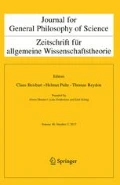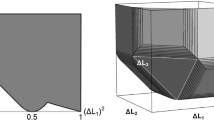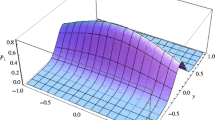Summary
The two Heisenberg Uncertainties (UR) entail an incompatibility between the two pairs of conjugated variables E, t and p, q. But incompatibility comes in two kinds, exclusive of one another. There is incompatibility defineable as: (p → − q) & (q→ − p) or defineable as [(p →− q) & (q →− p)] ↔ r. The former kind is unconditional, the latter conditional. The former, in accordance, is fact independent, and thus a matter of logic, the latter fact dependent, and thus a matter of fact. The two types are therefore diametrically opposed.
In spite of this, however, the existing derivations of the Uncertainties are shown here to entail both types of incompatibility simultaneously. Δ E Δ t ≥ h is known to derive from the quantum relation E = hν plus the Fourier relation Δ ν Δ t ≥ 1. And the Fourier relation assigns a logical incompatibility between Δ ν = 0, Δ t = 0. (Defining a repetitive phenomenon at an instant t → 0 is a self contradictory notion.) An incompatibility, therefore, which is fact independent and unconditional. How can one reconcile this with the fact that Δ EΔ t exists if and only if h > 0, which latter supposition is a factual truth, entailing that a Δ E = 0, Δ t = 0 incompatibility should itself be fact dependent? Are we to say that E and t are unconditionally incompatible (via Δ ν Δ t ≥ 1) on condition that E = hν is at all true? Hence, as presently standing, the UR express a self-contradicting type of incompatibility.
To circumvent this undesirable result, I reinterpret E = hν as relating the energy with a period. Though only one such period. And not with frequency literally. (It is false that E = ν . It is true that E = ν times the quantum.) In this way, the literal concept of frequency does not enter as before, rendering Δ ν Δ t ≥ 1 inapplicable. So the above noted contradiction disappears. Nevertheless, the Uncertainties are derived. If energy is only to be defined over a period, momentum only over a distance (formerly a wavelength) resulting during such period, thus yielding quantized action of dimensions Et = pq, then energies will become indefinite at instants, momenta indefinite at points, leading, as demanded, to (symmetric!) Δ E Δ t = Δ p Δ q ≥ h’s.
Similar content being viewed by others
References
Aharonov, Y., Bohm, D. “Time in the Quantum Theory and the Uncertainty Relation for Time and Energy”. Physical Review, 122, 1961.
Aharonov, Y., Bohm, D. “Answer to Fock Concerning the Time-Energy Uncertainty”. Physical Review, 134, 1964.
Antonopoulos, C. “The Uncertainty Relations of Energy and Time and the Conflict Between Discontinuity and Duality”. Microphysical Reality and Quantum Formalism, Vol.2, Kluwer Academic Publishers, Dordrecht 1988.
Antonopoulos, C. “Indivisibility and Duality; A Contrast”. Physics Essays, 7, 2, 1994.
Antonopoulos, C. “A Schism in Quantum Physics; How Locality May Be Salvaged”. Philosophia Naturalis, 34, 1, 1997.
Antonopoulos, C. “Time As Non-Observational Knowledge: How to Straighten Out Δ EΔt ≥h”. International Studies in the Philosophy of Science, 11, 2, 1997.
Busch, P. “On the Energy-Time Uncertainty Relation”. Foundations of Physics, 20, 1, 1990.
Coveney, P., Highfield, R. The Arrow of Time. Flamingo, London 1991.
Darrigol, O. “Strangeness and Soundness in de Broglie’s Works”. Physis, 30, 1993.
Hilgevoord, J., Uffink, J.B.M. “The Mathematical Expression of the Uncertainty Prin- ciple”. Microphysical Reality and Quantum Formalism”, Vol.1, Dordrecht, 1988.
Hooker, C.A. “The Nature of Quantum Mechanical Reality”. Paradigms and Parado xes, University of Pittsburgh Press, 1972.
Mackay, D.M. “Complementarity”. Proceedings of the Aristotelian Society, supplem. Vol., xxxii, 1958.
Marmet, P. “On the Interpretation of Heisenberg’s Uncertainty Relationship”. Physics Essays, 7, 3, 1994.
Author information
Authors and Affiliations
Corresponding author
Rights and permissions
About this article
Cite this article
Antonopoulos, C. Making the Quantum of Relevance. J Gen Philos Sci 36, 223–241 (2005). https://doi.org/10.1007/s10838-006-5716-y
Published:
Issue Date:
DOI: https://doi.org/10.1007/s10838-006-5716-y




